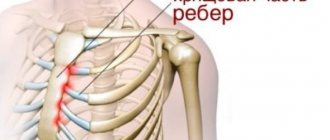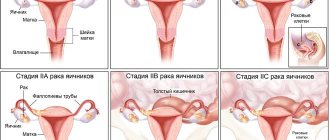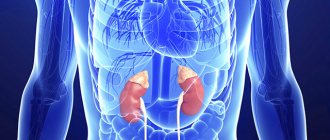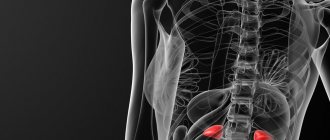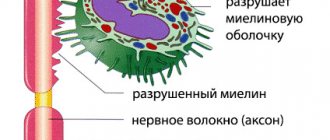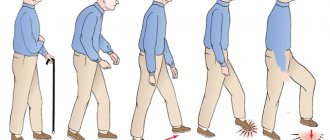Post-traumatic stress disorder
(
PTSD
) is caused by a traumatic event. Patients with PTSD have experienced and witnessed an event that caused intense fear, shock, or feelings of helplessness. Many of us experience short periods of difficulty and traumatic events. However, with time we get better and overcome difficulties.
On the other hand, there are times when symptoms worsen and can last for several months or years. In such cases, the patient's quality of life can be completely disrupted. To prevent PTSD, it is essential that the victim receive treatment as soon as possible.
Following a traumatic event, characteristic symptoms develop that include the constant reliving of the event. A person may suffer from post-traumatic stress disorder after experiencing or witnessing the following events:
- Military clashes;
- Natural disasters;
- Serious accidents;
- Terrorist attacks;
- Rape;
- Attacks.
Any of us can suffer from PTSD under certain circumstances. It is estimated that approximately 5% of men and 10% of women suffer from the disorder at some point in their lives. PTSD can occur at any age. About 40% of patients suffered from PTSD after someone very close to them suddenly died.
Photo: Wikipedia
PTSD: formation and risk factors
Post-traumatic disorder is formed against the background of the following factors:
- experiences arising from participation in hostilities, the loss of a loved one or other traumatic situation;
- destruction of old ideas about life;
- revaluation of personality, the emergence of new ideas about one’s own existence in the world around us.
There are high-risk professions whose representatives experience stress disorders more often than others:
- medical workers forced to save people during catastrophes and natural disasters;
- rescuers who constantly deal with loss of life;
- information workers (correspondents, reporters) who are required by duty to be in places of disasters and disasters;
- disaster participants and members of their families;
- persons subjected to domestic violence.
Triggers
Seizures are one of the worst manifestations of PTSD in response to a trigger. This is a psychological term denoting an event that causes the patient to experience a sharp re-experience of psychotrauma. Although in itself it does not pose a threat and does not pose any danger.
A trigger is always part of a traumatic experience. It can be anything:
- sounds: baby crying, siren, melody;
- image;
- being at a height;
- word (one or more) - spoken or written;
- any item;
- a person or animal who was nearby at the time of psychotrauma.
For those who have suffered from physical violence, the trigger is often the slightest touch, reminiscent of those terrible events. There are cases where women with PTSD began to have an attack if they were invited on a date without any malicious intent. The explanation is simple: before the emergency, the criminal acted in exactly the same way.
Triggers can be disaster films, horror or action films, as well as news with plots that are as similar as possible to what happened.
One of the therapist's jobs is to identify triggers so that the patient can successfully avoid them. Separate instructions are being developed on how to behave in the event that this cannot be avoided.
Causes of Afghan syndrome
Afghan syndrome occurs under the influence of the following traumatic situations:
- Military conflicts. The course of PTSD in persons who took part in hostilities is complicated by social maladjustment—the inability to return to peaceful life in society. Post-traumatic disorder is rarely found in people who quickly return to their normal lives.
- Being captured, taking hostages. This factor has the strongest impact on the psyche of people in peacetime. A distinctive feature of PTSD in this case is that deviations in the functioning of the nervous system develop already during exposure to a traumatic factor. The hostage ceases to correctly perceive the situation and may even experience sympathy for the captors (Stockholm syndrome).
- Sexual violence. This type of stress disorder was described more than 100 years ago. Even then it was indicated that the likelihood of developing mental disorders in victims of sexual violence depended on the behavior of others. Immoral behavior of others and blaming a person aggravate the course of PTSD and lead to secondary depression.
- Criminal attacks. A person may experience stress disorder after being robbed or beaten. The development of mental disorders can also appear in witnesses to murders.
- Natural and man-made disasters. The likelihood of post-traumatic syndrome depends on the magnitude of the loss (death of relatives, injuries, destruction of property). In the absence of severe losses, the risk of developing a mental disorder is minimal. In people who have lost loved ones, PTSD syndrome occurs in 80% of cases. At the same time, the survivor feels guilty that he could not save the dead.
- Domestic violence. A constant feeling of fear, instilled by a domestic tyrant, contributes to the development of a number of mental disorders. The victims most often are women, children and the elderly. In this case, post-traumatic disorders take a particularly severe course: patients find it difficult to adapt to life in a normal society, they feel helpless, damaged and humiliated. People who are regularly exposed to violence have many complexes and suffer from severe depression.
- Consequences of severe physical injuries and surgical interventions. They lead to the appearance of recurring unpleasant memories that negatively affect the mental state.
- The presence of incurable diseases in the person himself or his relatives. Depressive disorders are most often observed in cancer patients and HIV-infected people.
A little history
The ancient Greek historians Herodotus and Lucretius described the signs of PTSD in their writings. They observed soldiers who, after the war, became irritable and anxious, tormented by a flood of unpleasant memories.
Many years later, when examining former soldiers, increased excitability, fixation on difficult memories, immersion in one’s own thoughts, and uncontrollable aggression were discovered. The same symptoms were identified in patients after a train accident. In the mid-19th century, this condition was called “traumatic neurosis.” Scientists of the 20th century proved that the signs of such neurosis intensify over the years, rather than weakening. Former concentration camp prisoners voluntarily said goodbye to an already calm and well-fed life. Similar mental changes have also been observed in people who have become victims of man-made or natural disasters. Anxiety and fear have forever entered their daily lives. The experience accumulated over decades has allowed us to formulate the modern concept of the disease. Currently, medical scientists associate PTSD with emotional experiences and psychoneurotic disorders caused not only by extraordinary natural and social events, but also by social and domestic violence.
Symptoms of Post-Traumatic Stress Disorder
The clinical picture of post-traumatic stress disorder includes the following manifestations:
- Intrusive memories. Characterized by a pronounced feeling of fear and helplessness. The attack is accompanied by increased blood pressure, rapid heartbeat, cardiac arrest, increased sweating and frequent urination. In severe PTSD, auditory and visual hallucinations occur. Such symptoms can cause a desire to commit impulsive actions and suicide, and unmotivated aggression.
- Sleep problems. The most common nightmares are nightmares in which a person relives the catastrophe. This manifestation is similar to flashback attacks that occur during the daytime. The person experiences horror and develops symptoms of autonomic dysfunction (functional disorders of organs and organ systems). In severe cases, the patient becomes unable to distinguish between dreams and reality. With post-traumatic disorders, sleep disturbances also occur: insomnia, daytime sleepiness, difficulty falling asleep.
- Guilt. It is considered the most common symptom of post-traumatic stress disorder. The patient begins to look for an explanation for his actions. After military operations, a person begins to blame himself for the death of loved ones and strangers.
- Overstrain of the nervous system. The patient constantly experiences anxiety, which is associated with fear of intrusive memories. Loud sounds make you flinch and cause unreasonable fear.
- Asthenic syndrome. Depletion of the central nervous system contributes to a decrease in physical and mental performance, and the disappearance of creative abilities. Concentration deteriorates and irritability appears.
What is it
A severe mental illness caused by a late reaction to traumatic events that occurred in the past. A person completely concentrates only on them, living at once all the worst that happened to him. At the same time, the same feelings and emotions that he experienced at that tragic moment fall upon him. If anything even remotely resembling the horror experienced occurs in life (similar conditions, triggers), the condition worsens sharply.
Clinical types of post-traumatic stress syndrome
According to the nature of symptoms, post-traumatic disorders in psychology are classified into:
- Anxious. The patient suffers from frequent attacks of fear and sleep disturbances. A person strives to be among people, this helps to reduce the intensity of symptoms.
- Asthenic. The patient is indifferent to surrounding people and situations. The main sign of the pathology is constant drowsiness. Patients with this type of PTSD easily agree to treatment.
- Dysphoric. Characterized by frequent mood swings: a calm person suddenly becomes aggressive. In this case, therapy is carried out forcibly.
- Somatoform. Signs of mental disorder are combined with disorders of the digestive, cardiovascular, and respiratory systems. Patients are most often treated voluntarily.
PTSD in children
The causes of PTSD in children include the following factors:
- domestic violence and bullying (parents often hurt the child not only physically, but also psychologically);
- head injuries and surgical interventions suffered in early childhood;
- divorce of parents (the child is acutely worried about family conflicts, considering himself to be to blame for the separation of mom and dad; lack of communication with one of them also contributes to the development of stress);
- conflicts with relatives, friends and classmates (children gather in groups and choose the object of ridicule and bullying; the child is intimidated, which aggravates the course of the stress disorder);
- acts of violence witnessed or participated in by children;
- death of a close relative;
- changing of the living place;
- adoption;
- natural disasters or traffic accidents;
- long-term absence of parents (causes stress in newborns).
Up to 6 years
The clinical picture of PTSD in a child under 6 years of age includes the following manifestations:
- problems falling asleep in the evening;
- nightmares in which the child relives the traumatic situation;
- decreased concentration, absent-mindedness;
- pale skin;
- increased heart rate;
- frequent shallow breathing;
- refusal to communicate with other children and strangers.
6-12 years
The following symptoms are typical for post-traumatic mental disorders that occur in children aged 6–12 years:
- uncontrollable outbursts of aggression;
- feeling of guilt (the child considers himself involved in the occurrence of a tragic event);
- living through a traumatic situation by creating drawings, stories or poems.
Teenagers (12+)
PTSD in adolescents contributes to the appearance of the following symptoms:
- fear of death;
- decreased self-esteem;
- feeling of judgmental looks on oneself;
- craving for the use of alcoholic beverages, tobacco and drugs;
- isolation.
Parents sometimes try not to notice the symptoms of the disease, which makes the course of the obsessive condition worse. Treatment should begin immediately; therapy helps to enter adulthood normally and build a full-fledged family.
Stages
It is customary to distinguish several types of the disease.
Acute
Manifestations continue for 5-6 weeks after the tragic event. The symptoms of post-traumatic disorder are dominated by: fear, anxiety, excitability, irritability and anger. At the same time, if you promptly resort to the help of a psychotherapist, you can be completely cured. The moral support of family and friends will also have a beneficial effect on the recovery process.
Face-to-face consultation
What are the features and advantages of face-to-face consultation?
Find out more
Skype consultation
What are the features and benefits of Skype consultations?
Find out more
Chronic
It appears in the seventh week after the shock and lasts up to 6 months. At this stage, behavioral disorders become obvious, fear turns into phobias. The patient feels constant fatigue, is depressed, and does not want to live. The likelihood of recovery in this situation is already small. Because prolonged stress has had an irreparable effect on the subconscious.
Deferred
Occurs several years after traumatic events. The existing symptoms worsen, the person falls into deep depression. In attempts to distance himself from reality, he acquires various addictions. Such a person has practically no control over his emotions and actions. There is no longer talk about the possibility of curing him. All that remains is to maintain his condition at an acceptable level and carry out constant monitoring by a psychotherapist and psychiatrist.
Diagnosis of PTSD
Diagnosis of a mental disorder begins a month after the events that could lead to the disease. When examining a patient, the following criteria are taken into account:
- the person’s role in the traumatic event (participant or witness);
- frequency of intrusive thoughts and attacks of fear;
- the presence of pain and its localization;
- existing violations of social adaptation;
- the severity of fear at the time of the onset of a traumatic situation;
- time of occurrence of intrusive memories.
It is important to be able to distinguish PTSD from other neurological pathologies, such as head injuries and major depressive disorders. To do this, collect anamnesis and establish a connection between the patient’s condition and the key events that took place in his life.
The psychotherapist must correctly determine the type and nature of the course of post-traumatic syndrome. The final diagnosis is made if the patient has 3 or more signs of mental disorder.
Classification
There are four types of PTSD:
- Acute - the syndrome lasts 2-3 months and manifests itself with a pronounced clinical picture.
- Chronic - the symptoms of the pathology increase over 6 months and are characterized by exhaustion of the nervous system, a change in character, and a narrowing of the range of interests.
- The deformational type develops in patients with a long-term chronic mental disorder, leading to the development of anxiety, phobias, and neuroses.
- Delayed - symptoms appear six months after the injury. Various external stimuli can provoke its occurrence.
Treatment of PTSD
The method of treatment is selected depending on the nature of the stress syndrome.
No pills
Non-drug methods include:
- Psychotherapy. It consists of using techniques to help get rid of obsessive states and correct the patient’s behavior. Psychotherapy provides an opportunity to cope with disturbing memories and return to normal life.
- Proper organization of daily routine and nutrition.
Medication
The drug treatment regimen includes the following drugs:
- Sedatives (Valerian extract). The use of drugs is auxiliary; they help normalize sleep and reduce the intensity of anxiety.
- Selective serotonin reuptake inhibitors - SSRIs. Drugs (Zoloft, Prozac) improve mood, relieve suicidal tendencies, normalize the functioning of the autonomic nervous system, and reduce the frequency of attacks of fear and flashbacks. Long-term treatment helps cope with aggression and cravings for alcohol. In the first days of taking the pills, PTSD symptoms may intensify. Treatment begins with the administration of minimal doses.
- Tranquilizers (Phenazepam, Atarax). Eliminates nervous and muscle tension.
- Beta blockers (Propranolol). Prescribed for vegetative disorders accompanied by increased blood pressure and changes in heart rate.
- Neuroleptics (Alimemazine, Chlorprothixene, Sonapax). Used by patients suffering from frequent attacks of flashbacks accompanied by visual and auditory hallucinations. In severe cases of stress disorder and the absence of psychotic manifestations, tranquilizers of the benzodiazepine group are prescribed. For anxiety accompanied by autonomic disorders, Alprazolam is used, and for insomnia, Zolpidem is used.
- Nootropics (Nootropil). Indicated for asthenic form of PTSD. They stimulate the functions of the central nervous system and protect brain tissue from damage.
Consequences
The main complications of post-traumatic syndrome include:
- Psychotization of personality. An irreversible change in character traits that makes it difficult for a person to find a place in society and the team.
- Secondary depressions that have a protracted course.
- The emergence of obsessive fears and phobias. Fear of the dark and open spaces, fear of enclosed spaces.
- The occurrence of unmotivated panic attacks. Such conditions are accompanied by uncontrollable fear, attacks of asphyxia, and changes in heart rate.
- Development of psychological dependence on alcohol, gambling and drugs.
- Antisocial behavior. Aggression towards relatives and strangers, desire to commit crimes.
- Suicide attempts.

